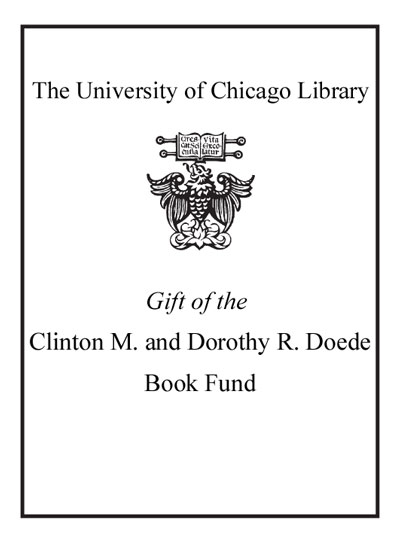The Iberian Peninsula between 300 and 850 : an archaeological perspective /
Saved in:
| Author / Creator: | Martínez Jiménez, Javier (Archaeologist), author. |
|---|---|
| Imprint: | Amsterdam : Amsterdam University Press, [2018] ©2018 |
| Description: | 396 pages : illustrations, maps, plans ; 24 cm. |
| Language: | English |
| Series: | Late antique and early medieval Iberia ; 6 Late antique and early medieval Iberia ; 6. |
| Subject: | |
| Format: | Map Print Book |
| URL for this record: | http://pi.lib.uchicago.edu/1001/cat/bib/11803504 |
MARC
| LEADER | 00000cam a2200000Ii 4500 | ||
|---|---|---|---|
| 001 | 11803504 | ||
| 005 | 20181002143248.9 | ||
| 008 | 170325t20182018ne abe b 001 0 eng d | ||
| 003 | ICU | ||
| 040 | |a BTCTA |b eng |e rda |c BTCTA |d BDX |d ERASA |d YDX |d BNG |d OCLCF |d GUA |d DDO |d QGJ | ||
| 020 | |a 9789089647771 |q (hardback) | ||
| 020 | |a 9089647775 |q (hardback) | ||
| 020 | |z 9789048525744 |q (electronic bk.) | ||
| 020 | |z 9048525748 |q (electronic bk.) | ||
| 035 | |a (OCoLC)979568142 | ||
| 050 | 4 | |a DP44 |b .M37 2018 | |
| 082 | 0 | 4 | |a 938 |
| 100 | 1 | |a Martínez Jiménez, Javier |c (Archaeologist), |e author. |4 aut |0 http://id.loc.gov/authorities/names/no2013047139 | |
| 245 | 1 | 4 | |a The Iberian Peninsula between 300 and 850 : |b an archaeological perspective / |c Javier Martínez Jiménez, Isaac Sastre de Diego, and Carlos Tejerizo García. |
| 264 | 1 | |a Amsterdam : |b Amsterdam University Press, |c [2018] | |
| 264 | 4 | |c ©2018 | |
| 300 | |a 396 pages : |b illustrations, maps, plans ; |c 24 cm. | ||
| 336 | |a text |b txt |2 rdacontent |0 http://id.loc.gov/vocabulary/contentTypes/txt | ||
| 336 | |a still image |b sti |2 rdacontent |0 http://id.loc.gov/vocabulary/contentTypes/sti | ||
| 336 | |a cartographic image |b cri |2 rdacontent |0 http://id.loc.gov/vocabulary/contentTypes/cri | ||
| 337 | |a unmediated |b n |2 rdamedia |0 http://id.loc.gov/vocabulary/mediaTypes/n | ||
| 338 | |a volume |b nc |2 rdacarrier |0 http://id.loc.gov/vocabulary/carriers/nc | ||
| 490 | 1 | |a Late antique and early medieval Iberia ; |v 6 | |
| 504 | |a Includes bibliographical references (pages [341]-388) and index. | ||
| 505 | 0 | 0 | |g Introduction: |t An archaeological perspective on the Iberian peninsula between Rome and the Middle Ages -- |g Part 1. The late Roman period. |g 1. |t The settings of late Roman Hispania -- |g 2. |t New townscapes in the late Empire -- |g 3. |t The economy and the rural world in the late Empire -- |g 4. |t Christianization and Germanization: new evisence for current debates -- |g Part 2. The post-Roman period. |g 5. |t Towns and cities under Christian prevalence -- |g 6. |t The new rural landscape -- |g 7. |t A new material culture: a new society, a new economy -- |g Part 3. The early Middle Ages. |g 8. |t The formation of a new Medieval materiality -- |g 9. Conclusions: |t From the collapse of the Roman Empire to a Brave New World. |
| 520 | 8 | |a The vast transformation of the Roman world at the end of antiquity has been a subject of broad scholarly interest for decades, but until now no book has focused specifically on the Iberian Peninsula in the period as seen through an archaeological lens. Given the sparse documentary evidence available, archaeology holds the key to a richer understanding of the developments of the period, and this book addresses a number of issues that arise from analysis of the available material culture, including questions of the process of Christianisation and Islamisation, continuity and abandonment of Roman urban patterns and forms, the end of villas and the growth of villages, and the adaptation of the population and the elites to the changing political circumstances. | |
| 651 | 0 | |a Iberian Peninsula |x Antiquities. | |
| 650 | 7 | |a Antiquities. |2 fast |0 http://id.worldcat.org/fast/fst00810745 | |
| 651 | 7 | |a Europe |z Iberian Peninsula. |2 fast |0 http://id.worldcat.org/fast/fst01919592 | |
| 700 | 1 | |a Sastre de Diego, Isaac, |d 1978- |e author. |4 aut |0 http://id.loc.gov/authorities/names/nb2013014011 | |
| 700 | 1 | |a Tejerizo García, Carlos, |e author. |4 aut |0 http://id.loc.gov/authorities/names/n2018036115 | |
| 830 | 0 | |a Late antique and early medieval Iberia ; |v 6. |0 http://id.loc.gov/authorities/names/no2016110564 | |
| 903 | |a HeVa | ||
| 929 | |a cat | ||
| 999 | |n 514-0 |c JRL |r 170 | ||
| 999 | f | f | |i d49e8e01-fdce-5b1d-8c4e-73ac75071e04 |s d5f4ca36-d99b-5832-a819-7201ee3a60fe |
| 928 | |t Library of Congress classification |a DP44 .M37 2018 |l JRL |c JRL-Gen |i 11260601 | ||
| 927 | |t Library of Congress classification |a DP44 .M37 2018 |l JRL |c JRL-Gen |e DOED |b 116033224 |i 10096048 | ||

